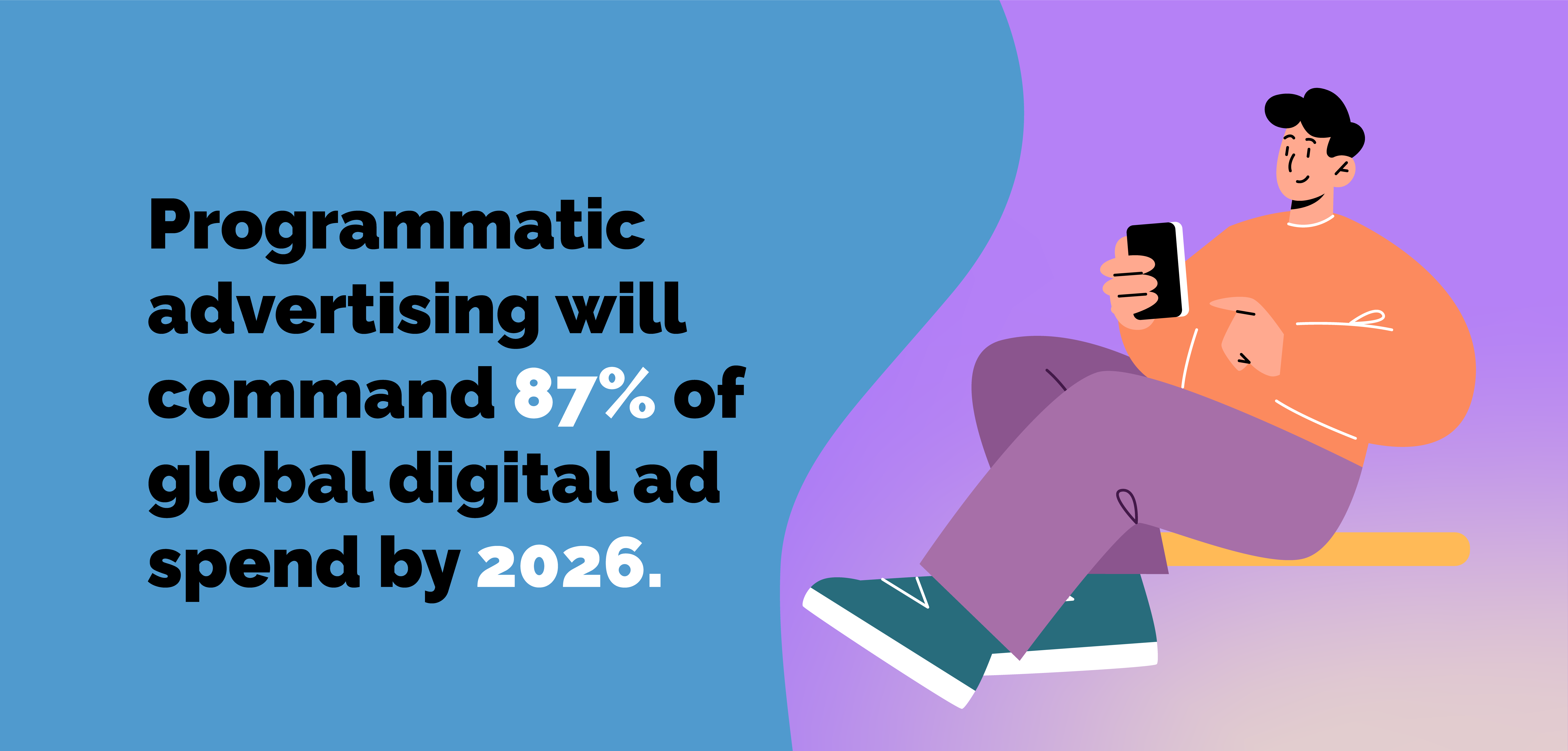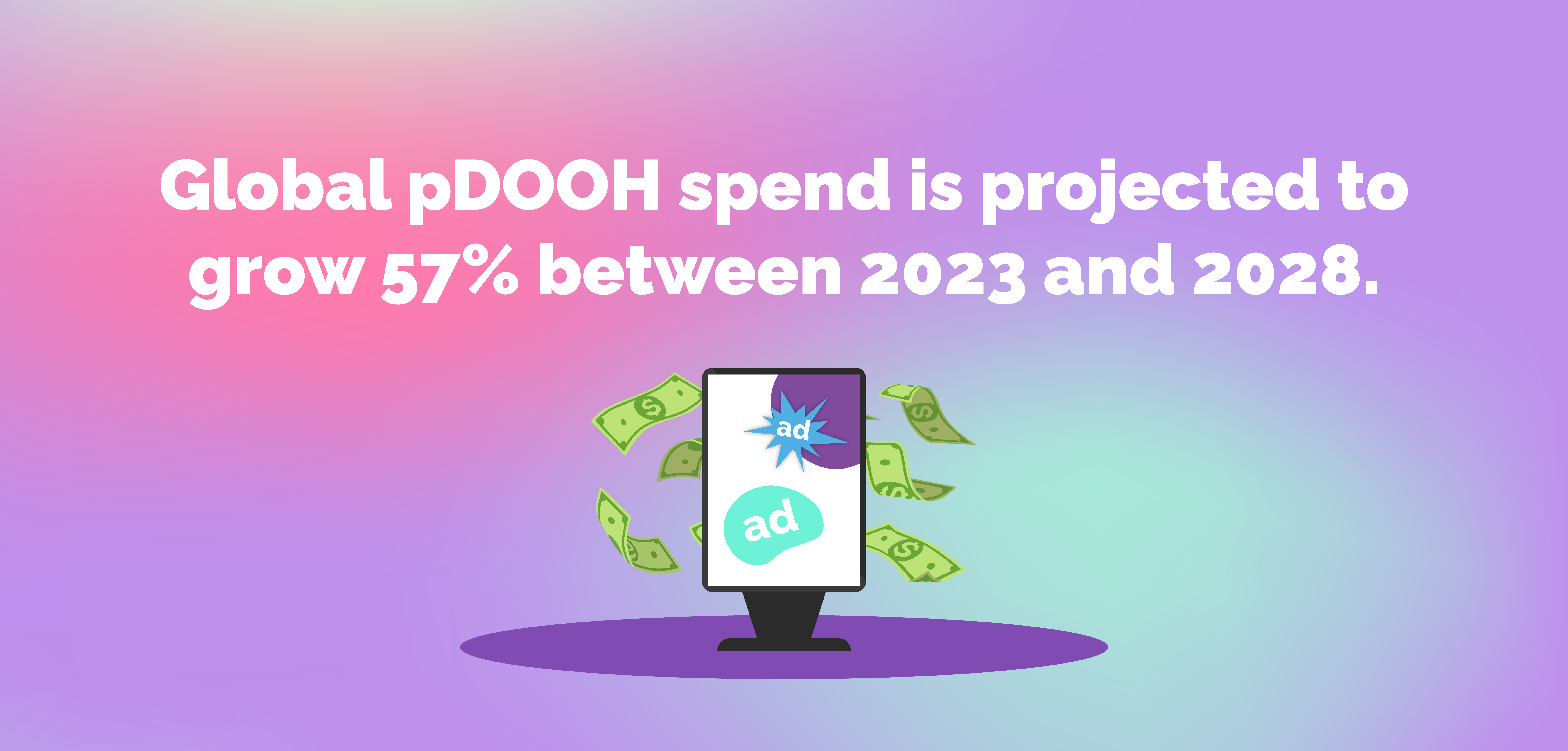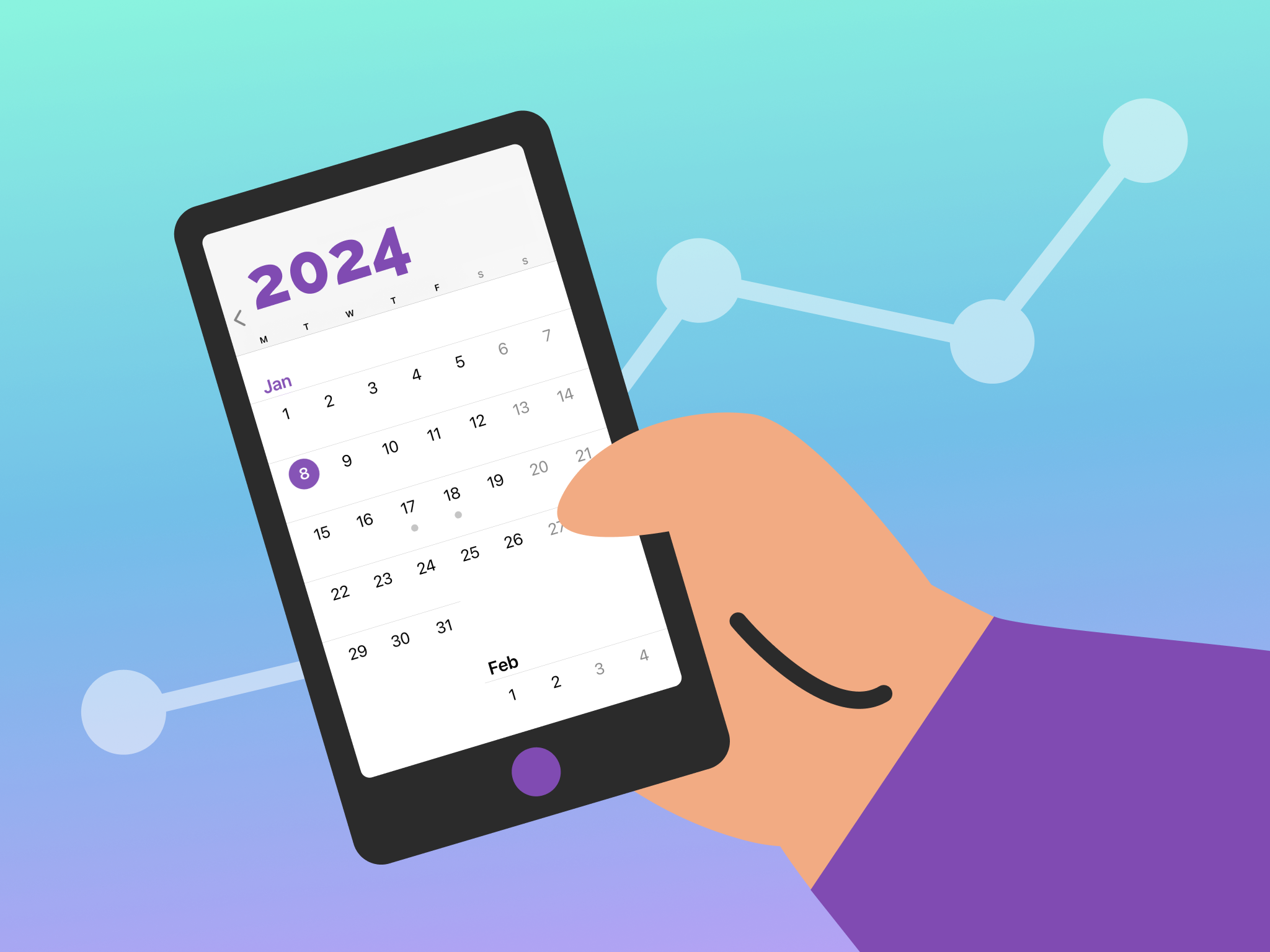Forecasts suggest that programmatic advertising will command 87% of global digital ad spend by 2026, propelled by evolving technologies and shifting regulations, such as the sunsetting of third-party cookies, which has elevated the importance of first-party data.
Meanwhile, AI and machine learning are revolutionizing ad targeting and efficiency. As programmatic advertising continues to evolve rapidly, staying updated is crucial for marketers who want to stay ahead of the curve.

According to José Moya, Outreach Manager at Capicua Full Stack Creative Hub, “innovations in data analytics, AI-driven personalization, and enhanced targeting capabilities that will redefine how brands engage their audiences,” adding that “the convergence of creativity and technology will unlock new levels of campaign effectiveness.”
As we edge closer to 2024, it’s essential to anticipate the next wave of innovation in the programmatic advertising space. Today, we’ll explore the top five key trends set to shape programmatic advertising in 2024, offering insights to navigate the ever-changing digital advertising ecosystem.
1. AI Technology Continues to Enhance Programmatic Advertising
In 2024, we can expect AI and machine learning to further refine the abilities of programmatic advertising. The promise of AI lies in its ability to transform targeting into something of an art form, crafting sophisticated models that harness a broad spectrum of data points. Advertisers will leverage AI to sift through contextual cues, behavioral patterns, and invaluable first-party data to reach their audience with unprecedented precision.
Personalization at scale will become increasingly easier to achieve as AI scales up the customization of ads to individual preferences and interests, making generic ads a thing of the past. At the same time, AI’s capacity to optimize ad delivery will sharpen, ensuring the timing of ad delivery aligns perfectly with user engagement, which will limit ad waste and enhance campaign efficacy.
Furthermore, AI will bring a new level of clarity to campaign analytics. The development of transparent and precise measurement tools powered by AI will offer advertisers crystal-clear insights into campaign performance. This visibility will empower advertisers to make well-informed decisions, optimizing ad spend for maximum impact and efficiency.
2. The Emergence of More Cookieless Identity Solutions
The programmatic advertising industry is rapidly reorienting toward privacy-first, cookieless identity solutions. With the industry’s pivot away from third-party cookies, advertisers are embracing alternative methods that promise a balance between user privacy and targeted efficiency.
These innovations mark a significant leap towards a more sustainable, privacy-conscious advertising ecosystem, promising a renaissance in how we understand and reach audiences.
For example, advertisers are increasingly turning to first-party data, collected directly and with consent, to inform their campaigns. This not only aligns with tighter privacy regulations but also ensures data relevancy and accuracy.
Furthermore, the shift amplifies the role of contextual targeting, allowing ads to align with content rather than user history, thus preserving user privacy — a huge concern in today’s advertising landscape.
At the same time, sophisticated AI-driven models are emerging, enabling the prediction of user interests through analysis of non-intrusive data points such as search behavior and browsing history without compromising individual identities. This nuanced approach promises to retain the effectiveness of targeted advertising in a post-cookie world.
Efficiency in ad delivery also stands to benefit, as cookieless solutions mean less data being transferred between parties, streamlining the entire process. Among the emerging cookieless identity solutions are:
- Unified ID 2.0: A collaborative solution that provides a common framework for advertisers to identify users anonymously.
- Federated Learning of Cohorts (FLoC): Proposed by Google, this technology groups users with similar browsing behaviors, allowing for privacy-preserving demographic targeting.
- Advertising ID Consortium: An initiative to develop a standardized identifier that ensures privacy while allowing for accurate targeting and measurement.
3. The Contextual Targeting Renaissance
Though closely linked to the emergence of new cookieless solutions, contextual targeting merits its own mention. The impending twilight of third-party cookies is heralding a resurgence in contextual targeting, which is shaping up to be a predominant trend within programmatic advertising.
In this emerging landscape, the spotlight shifts from individual user data to the relevance of content where the ads are placed. As advertisers navigate a more privacy-centric environment, aligning ads with the substance of web pages or video content presents a non-intrusive yet effective strategy for reaching target audiences.
As Sudhir Khatwani, Director of The Money Mongers, Inc., puts it, “It’s like meeting your audience at a rock concert rather than peeking through their windows.”

This comparison underscores the transition to a more respectful and openly engaging method of connecting with consumers, where the environment is just as important as the message it carries.
4. More Publishers Roll Out Programmatic Offerings
The programmatic advertising landscape is witnessing a significant expansion as more companies venture into the adtech space, bolstering their revenue streams by offering up their data and ad inventory for programmatic partnerships.
This shift indicates a growing recognition of the value that programmatic advertising brings to the table in terms of precision targeting and maximization of ad revenue.
Take grocery delivery giant Instacart, which has collaborated with The Trade Desk, creating a unique opportunity for Consumer Packaged Goods (CPG) brands to leverage both companies’ strengths in data and advertising technology and deliver more personalized and effective advertising solutions.
In the realm of streaming, Disney Plus is paving the way with its ad-supported tier, which, according to Marketing Dive, not only broadens viewer choice but also opens up new avenues for targeted advertising and comprehensive measurement features, bringing a sophisticated edge to the programmatic offerings within the streaming industry.
Moreover, legacy publishers like The New York Times are re-entering the programmatic arena, with their app reintroducing programmatic ads. This move is a strategic play to optimize ad revenue while still maintaining control over the user experience and quality of ads served.
5. The Expansion of Existing Channels
Leveraging multichannel opportunities to create cohesive campaigns will be a winning strategy for advertisers in 2024. Here are some of the ways you’ll be able to harness the power of programmatic across different channels.
Programmatic Video Advertising
Programmatic video advertising is transcending its original bounds, moving from the realms of Connected TV (CTV) and Over-The-Top (OTT) platforms into linear television. One example of this expansion is AMC Networks’ breakthrough into programmatic ad buying for linear TV, a pioneering move facilitated by partnerships with The Trade Desk and FreeWheel.
Nonetheless, CTV is predicted to continue its quest for world domination, and advertisers will continue to find innovative ways to harness its unparalleled reach and personalization capabilities.
CTV ad spend hit a record-breaking $1 billion in 2023, a trend that will continue as we head into 2024. By 2028, CTV ads are expected to bring in $42.5 billion for advertisers.
Programmatic Digital Out-Of-Home (pDOOH)
As pDOOH continues to evolve, we can expect to see more integrations with digital advertising that will enable more cohesive campaigns across all channels, with global pDOOH spend projected to grow 57% between 2023 and 2028.

Despite taking a hit during the pandemic, pDOOH has rebounded, and now that people have returned to public spaces, they are viewing and interacting more with pDOOH ads, helping to drive growth in this area. Additionally, this medium allows advertisers to find new and creative ways to connect with their audiences.
The advantages of pDOOH will help drive its continued growth — for instance, it doesn’t rely on cookies, has a broad reach, is resistant to ad blockers, and is relatively unobtrusive compared to other types of advertising.
Programmatic Audio Ads
Programmatic audio is rapidly evolving, driven by the explosive growth of digital audio listenership. At Cannes Lions this year, Drew Wilson, SoundCloud’s chief operating and financial officer, told The Drum that 75 percent of people in the US aged 12 or over consume digital media on a monthly basis. Yet digital audio advertising only accounts for 3 percent of ad spend — representing a huge opportunity for programmatic audio advertising.

Therefore, we expect to see growing spend on digital audio ads — Statista predicts a global increase from $10 billion in 2023 to $12 billion in 2027, with podcast programmatic abilities expanding to enhance targeting and personalization through data.
In-Game Advertising
Lastly, in-game advertising is carving out its niche in the programmatic space. Its potential is vast, with forecasts suggesting a global spend north of $700 billion by 2026, underpinned by the growth of gaming and the immersive advertising opportunities it presents.
Create Successful Campaigns in 2024 and Beyond
Successful programmatic ad campaigns in 2024 will harness new ad technologies, relying on first-party data and contextual advertising to create campaigns that are highly personalized while respecting user privacy.
Meanwhile, brands that embrace a variety of channels — such as CTV, digital audio, and pDOOH — will stay ahead of the competition.
If you’re looking for more advice on how to take your programmatic efforts to the next level in 2024, check out our guide to the best video advertising practices for better ROI.Alternatively, start a conversation with Grape Bot, our AI chatbot, by clicking the button in the bottom-right corner of your screen.






